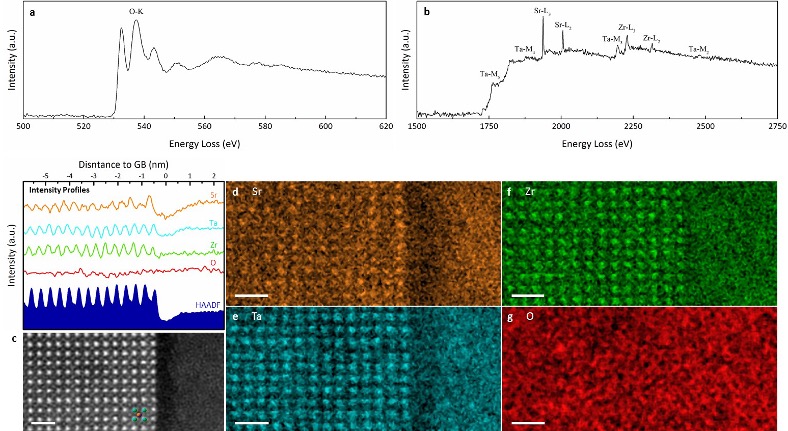 The main goal of this research is to reveal the atomic-scale origin of the low grain-boundary (GB) resistance in Li0.375Sr0.4375Ta0.75Zr0.25O3 (LSTZ0.75) perovskite solid electrolyte and to provide insights on overcoming the ubiquitous bottleneck of high GB resistance in other oxide solid electrolytes.
The main goal of this research is to reveal the atomic-scale origin of the low grain-boundary (GB) resistance in Li0.375Sr0.4375Ta0.75Zr0.25O3 (LSTZ0.75) perovskite solid electrolyte and to provide insights on overcoming the ubiquitous bottleneck of high GB resistance in other oxide solid electrolytes.
Scientific highlight
· Aberration-corrected scanning transmission electron microscopy and spectroscopy, along with an active learning moment tensor potential, were used to reveal the atomic scale structure and composition of LSTZ0.75 GBs.
· Li depletion, which is a major cause for the low GB ionic conductivity of Li3xLa2/3-xTiO3 (LLTO), was found to be absent for the GBs of LSTZ0.75.
· A unique defective cubic perovskite interfacial structure that contained abundant vacancies was discovered at the GBs of LSTZ0.75. We attributed the low GB resistance of LSTZ0.75 to this microstructure.
· Based on our results, we conclude vacancy and defect engineering can effectively improve GB ionic conductivity of solid Li-ion conductors, given that the material’s original structural framework should be maintained.
Scientific impact
This study provides new insights into the atomic-scale mechanisms of low GB resistance and sheds light on possible paths for designing oxide solid electrolytes with high total ionic conductivity.